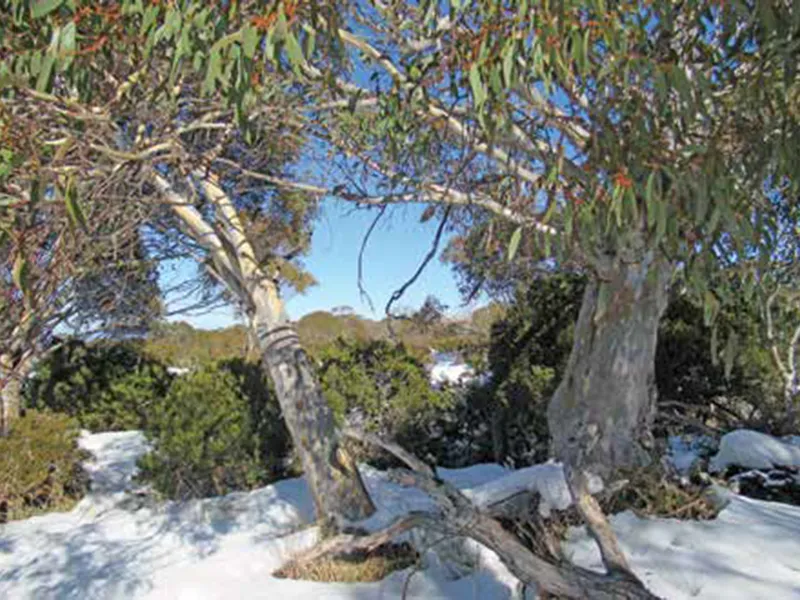
When our family visited the snow last July in Victoria’s high country, I was reminded of how much I love snow gums and how, in first-year botany aeons ago, it was used as an example of a cline – the same species with substantial variation in appearance throughout its range due to environmental factors.
Eucalyptus pauciflora is found primarily in the Snowy Mountains and also in Tasmania. It can reach about 30 m at lower altitudes but, above the snow line, it rarely reaches 4 m high, with a spreading mallee-like habit.

While known mostly as snow gum, other common names are white sallee, cabbage gum, weeping gum or ghost gum. It usually has a somewhat crooked
trunk and many branches with distinctive smooth green, grey and cream bark.
The genus name comes from the Greek meaning ‘well capped’, alluding to the bud cap protecting the immature stamens and pauciflora means ‘fewflowered’, as misleading a name as ever I have heard, with eleven or more white flowers in an inflorescence from October to January.
Franz Wilhelm Sieber, a 34-year-old Bohemian botanist arrived in New South Wales in 1823. In seven months he collected many plant specimens and took them back to Europe for identification. Either he collected a poorly represented specimen of E. pauciflora or, in his travels home, the specimen lost some of its buds but he believed it to have few flowers. However, a few years later he sold his collection to Konrad Christian Sprengel, a Prussian botanist, who observed the scars of six florets in the type specimen, so it remains a mystery why it was named as ‘few-flowered’.
Sieber died aged 55 at the Prague Lunatic Asylum. He is remembered in many plant names, including Gahnia sieberiana, the red-fruited saw sedge, which occurs in the Adelaide Hills, along the east coast of Australia and into SE Asia.
Eucalyptus pauciflora is long-lived and slow growing. It is one of the few eucalypts which can be transplanted as large specimens because of its fibrous
root system. It can withstand snow and ice, prospers in well-drained soil but survives in a wide range of conditions from exposed dry sites with shallow, rocky soils to wet snowy areas on high ridge tops. It can easily be cultivated from seed and makes an attractive specimen tree. Its large gumnuts increase its horticultural attractiveness.
It is used for windbreaks, shade, fence posts, fuel, honey and the oil from its leaves, like other eucalypt species, has medicinal uses to relieve nasal congestion, ease muscle soreness and as a disinfectant. However, eucalyptus oil is highly poisonous when ingested.
Nothing says more about our unique snow country than the presence of these beautiful trees and, even if you’re not a fan of the cold, the high country is worth a visit, especially in the summer when snow gums are flowering.
Nicky Fidler
Editor’s Note: this article brought back memories of my time in Armidale, NSW where we were fortunate to have a few, albeit smallish, snow gums on a small property we owned.
Reproduced with permission from Friends of Botanic Gardens of Adelaide Gazette, Volume 47 no 2 (July 2024).





